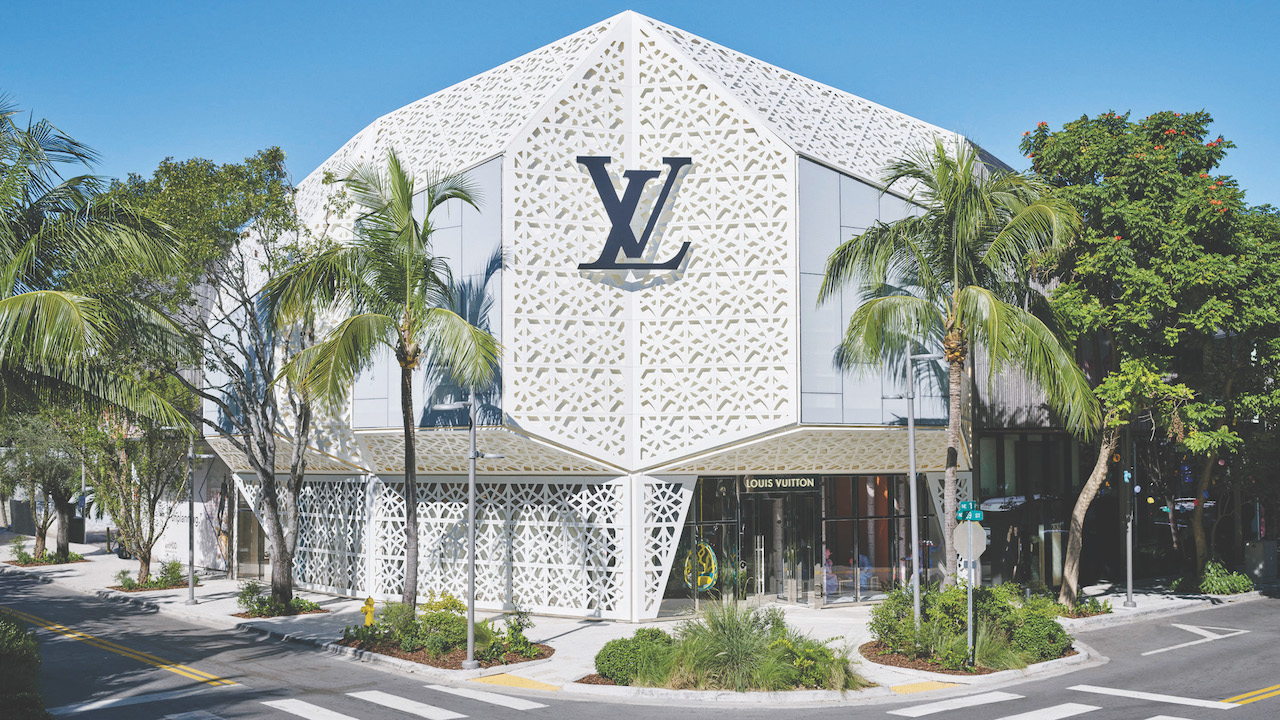

When entrepreneur and real estate developer Craig Robins first became interested in reinvigorating 18 neglected square blocks filled with under-utilized commercial buildings in the Miami Design District, he knew getting creative was key if it was to successfully be transformed into a world-class destination. “The neighborhood was founded on the liveliness that results from merging art, architecture, fashion and design,” he tells GRAZIA USA. “From the very beginning, I saw an opportunity to develop a thriving creative community that could contribute to Miami’s cultural fabric and to create a place like no other.”
Robins, the founder and CEO of Dacra, happens to know a thing or two about what nurturing and revitalizing historic sections of the city entails. Years before the Miami native set his sights on the Design District, he helped save large swaths of the Art Deco District in South Beach from the wrecking ball.
With that experience in mind, he began acquiring properties in the Design District over two decades ago, refurbishing historical structures and putting up new ones. Design showrooms began calling the neighborhood home and a strong focus on arts programming helped attract artists and other creatives. The Miami Design District entered into a partnership with L Catterton in 2010 to further develop the area. The fashionable arrival of brands under the LVMH umbrella to the Design District the following year led to an influx of other top-notch retailers setting up shop here. “Luxury brands and leading fashion houses see the Miami Design District as a hub in the U.S. where they can make a statement,” Robins explains.

Well-heeled visitors are certainly listening, and through the years fashionistas have taken advantage of the fact many brands like Louis Vuitton, Fendi, Dior, Gucci and Prada choose the Miami Design District as the place to debut limited edition collections or introduce exclusive pop-ups throughout the year.
Fine dining is also a huge draw to the Design District — seven restaurants have received recognitions from Michelin. But the core of the area is arguably its arts scene, and it’s a subject that’s close to Robins’ heart. His interest in art, design and architecture turned into a passion when he studied in Barcelona during college. “During that time, I discovered Goya, Picasso, and Dali,” he recalls. “Goya, in particular, had a profound impact on me and my boundless curiosity for art was awakened.”
Later in life, the avid collector’s Design District project became the perfect outlet for his enthusiastic embrace of creative fields, benefitting not only the neighborhood but also the community at large. Robins founded the Anaphiel Foundation, a non-profit that supports arts education and exploration. And the Miami Design District continuously collaborates with an impressive roster of global artists, designers and architects that has ranged from John Baldessari and A.L. Steiner to Daniel Toole and Emmett Moore.

“Part of what is so great about the neighborhood is that it is always launching or exhibiting new things,” Robins says, noting Germane Barnes was awarded this year’s Miami Design District Annual Commission. Titled Rock | Roll and up through the new year, the multifaceted, multi-scale installation consists of a series of oversized hued seating capsules that sway back and forth when activated by users. The feathered costumes of Miami Carnival inspired the project’s arresting textures and vibrant colors.
While the Design District has a big impact on visitors who tread its chic streets, the neighborhood leaves a small footprint on the environment. It was the first in the world to achieve LEED ND Gold certification, a symbol of sustainability that’s globally recognized. “This represents our commitment to innovation, sustainability, and responsible use of resources,” Robins notes. “We always envisioned creating a unique mixed-use development that remains healthy, resilient and sustainable for generations.”

So what might be in store for future fans of the area? Robins notes the Design District is “ever-evolving” and will soon welcome the neighborhood’s first Class A office building, “The Ursa.” Arquitectonica designed the structure to include monumental exterior and interior-site specific artworks and furniture by Daniel Arsham, the founder of art and design firm Snarkitecture and graduate of the Design and Architecture Senior High School (DASH), which is located in the heart of the Design District.

The opening of several new restaurants and retail stores as well as a boutique hotel are also on the horizon. “The neighborhood combines commerce and culture and the result is something entirely its own,” Robin says. “Around every corner there is new art, design, engaging programming, shops and fine food. The Miami Design District should be the first stop on anyone’s list when they visit Miami.”
Read GRAZIA Gazette: Art Basel, Edition 1:














